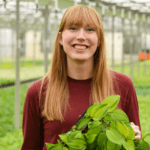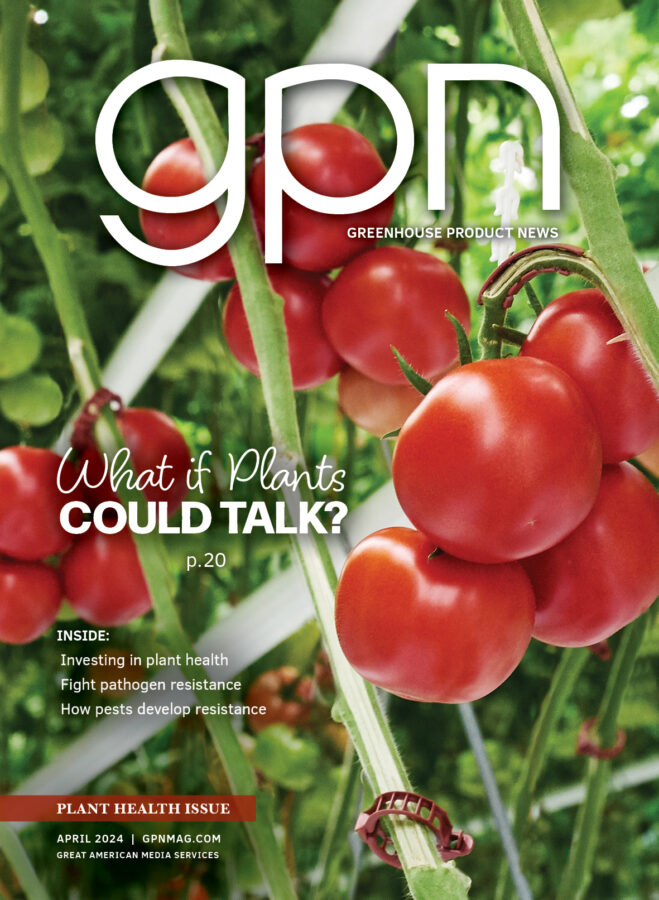
Technically Speaking: Lighting plants indoors, without sunlight
Greenhouse production takes advantage of sunlight, which usually provides most, if not all, the light to crops grown inside. Greenhouse growers, however, are increasingly amending sunlight with low-intensity photoperiodic lighting to create long day, high-intensity lighting to increase growth and yield, or both. Despite the benefits of greenhouse lighting, there are still daily and seasonal fluctuations in light (and other environmental factors) that affect crop timing and quality.
With indoor production, the only light source available to plants is from electric (artificial) light. While the capital and operational lighting expenditures are usually higher for indoor production facilities, there are numerous potential benefits to growing indoors. This article provides an overview of some major considerations when developing an indoor lighting system.
Photoperiod, DLI and light intensity. Among the first and most critical steps with an indoor lighting system is to determine your target daily light integral (DLI). The DLI refers to the total quantity of photosynthetic light received each day and has a unit of mol∙m–2∙d–1, or more simply moles per day. The DLI is a product of the light intensity (the photosynthetic photon flux density, or PPFD) and the duration that the lights operate (the photoperiod). The choice of photoperiod depends on the crop and whether photoperiod regulates flowering or not. A common photoperiod for many crops produced indoors is 18 to 20 hours, but shorter photoperiods (i.e., 12 hours) may be desired to promote flowering of short-day plants such as cannabis.
As an example, many young plants can be grown under long days and a moderate DLI, so one could choose a photoperiod of 18 hours and a target DLI of 12 mol∙m–2∙d–1. The required PPFD to achieve this DLI is calculated as 12 (DLI) × 277.8 (a constant) ÷ 18 (hours) = 185 µmol∙m–2∙s–1. That may be too much light for some applications, such as when weaning plants from tissue culture, or too little for other crop types such as fruiting plants (strawberry, tomato, etc.).
Light spectrum. Since the only light available to plants grown indoors is from electric lighting, the choice of light spectrum is critical. Today, practically all indoor lighting fixtures are composed of red, white and/or blue light-emitting diodes (LEDs), although sometimes far-red LEDs are also included. The light spectrum regulates leaf size and color, stem elongation, and other plant quality attributes. A desirable light spectrum is situational and could vary from one crop to the next, or for one market to another. Therefore, discuss spectrum options with plant lighting providers, fellow growers and university/Extension educators. Key considerations include the percentages of blue and far-red light. Also, consider whether dimmability or tuning of the light spectrum are value-added attributes. An indoor lighting guide provides research-based information for seedling production: https://tinyurl.com/indoor-light.
Efficacy. The conversion of electricity into light useful for photosynthesis (efficacy) is a major performance indicator for lighting fixtures. The metric for plant lighting efficacy, quantified in µmol∙J–1 (micromoles per joule), is especially important for indoor lighting. A higher value means less energy is consumed to deliver a particular light level and less energy is lost as heat. In many cases, additional energy is consumed for refrigeration to expel this waste heat. Therefore, low-efficacy fixtures require more electricity to deliver light and to condition the growing environment compared with higher-efficacy fixtures.
Light uniformity. Equal distribution of light is even more important indoors than in greenhouses. The growth and shape of plants is controlled by light, so spatial variation in light intensity or light quality usually translates into variation in plant growth. Work with a lighting provider to determine fixture spacing and mounting height considering the desired light intensity and spatial uniformity. Keep in mind that the output and directionality of light is very specific to a particular fixture, necessitating fixture-specific lighting layouts.
Durability. Indoor lighting products should be safety certified and rated to tolerate damp conditions, and preferably have at least a five-year warranty. Another guideline is the light output should be maintained to at least 90 (referred to as the Q90) after 36,000 hours of use (2,000 days if operated 18 hours per day). These selection criteria help ensure durability and performance of indoor lighting fixtures.
For an enhanced reading experience, view this article in our digital edition by clicking here.


 Video Library
Video Library 




















